Abstract
Concurrent-chains schedules of reinforcement were arranged for humans and pigeons. Responses of humans were reinforced with tokens exchangeable for money, and key pecks of 4 birds were reinforced with food. Variable-interval 30-s and 40-s schedules operated in the terminal links of the chains. Condition 1 exposed subjects to variable-interval 90-s and variable-interval 30-s initial links, respectively. Conditions 2 and 3 arranged equal initial-link schedules of 40 s or 120 s. Experimental conditions tested the descriptive adequacy of five equations: reinforcement density, delay reduction, modified delay reduction, matching and maximization. Results based on choice proportions and switch rates during the initial links showed that pigeons behaved in accord with delay-reduction models, whereas humans maximized overall rate of reinforcement. As discussed by Logue and associates in self-control research, different types of reinforcement may affect sensitivity to delay differentially. Pigeons' responses were reinforced with food, a reinforcer that is consumable upon presentation. Humans' responses were reinforced with money, a reinforcer exchanged for consumable reinforcers after it was earned. Reinforcers that are immediately consumed may generate high sensitivity to delay and behavior described as delay reduction. Reinforces with longer times to consumption may generate low sensitivity to delay and behavior that maximizes overall payoff.
Full text
PDF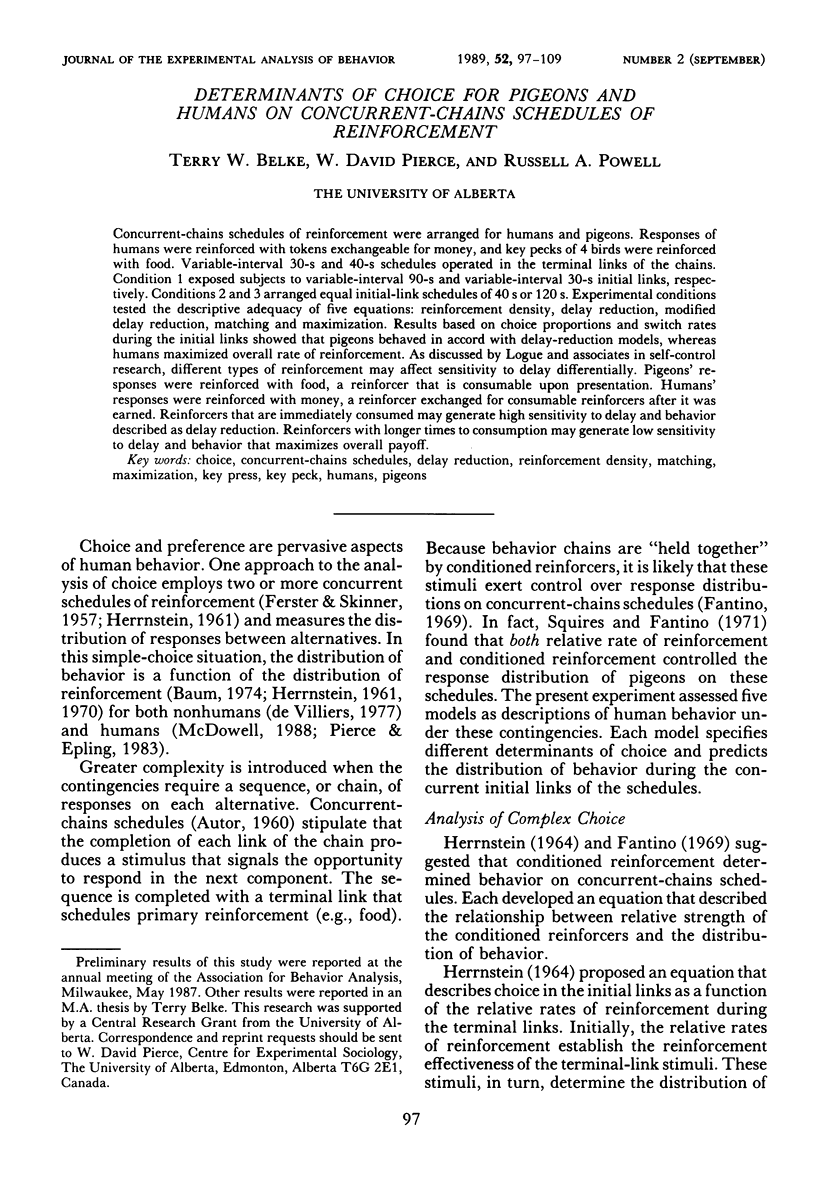
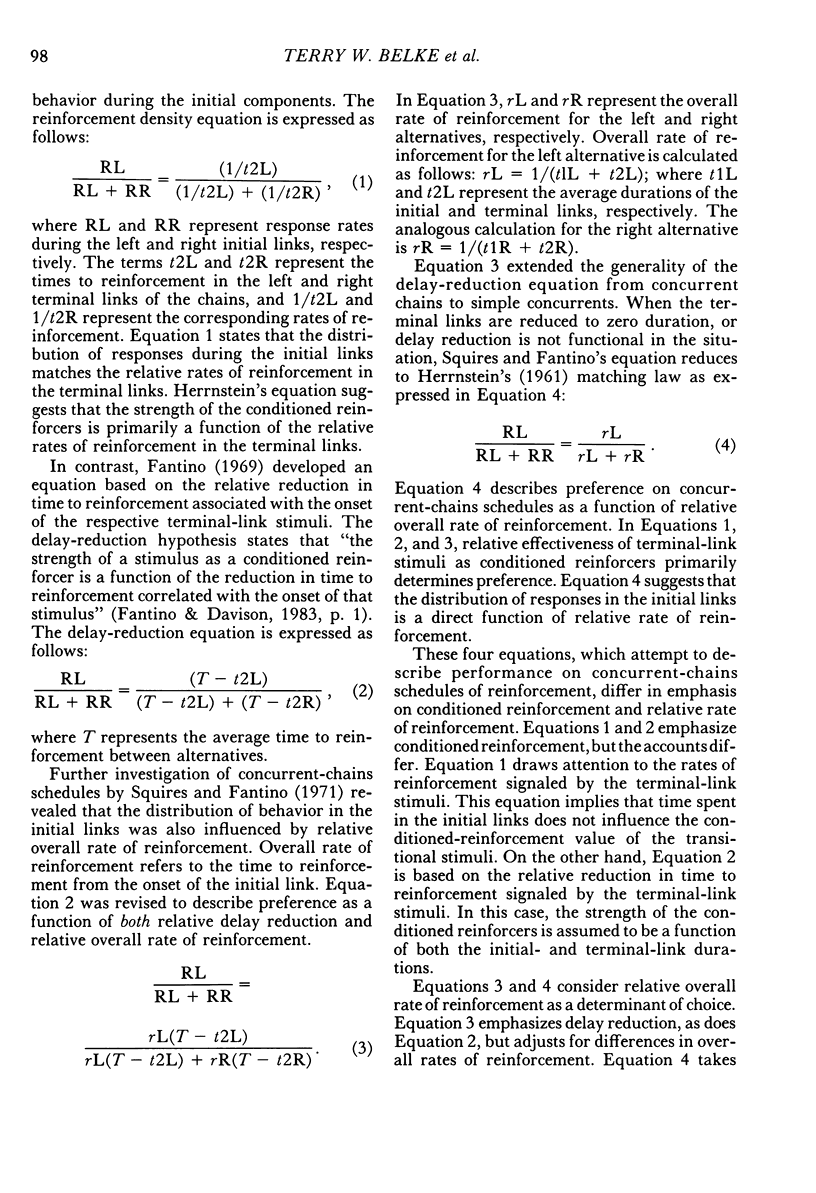
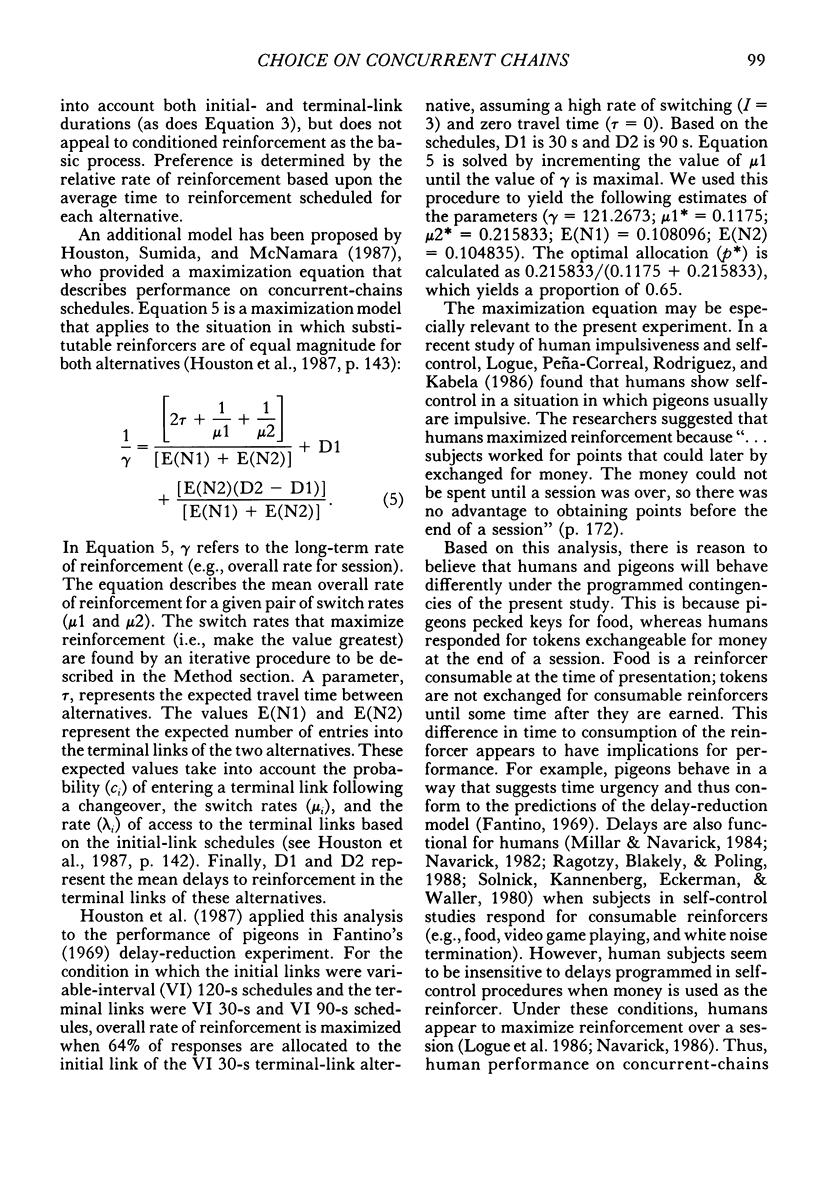
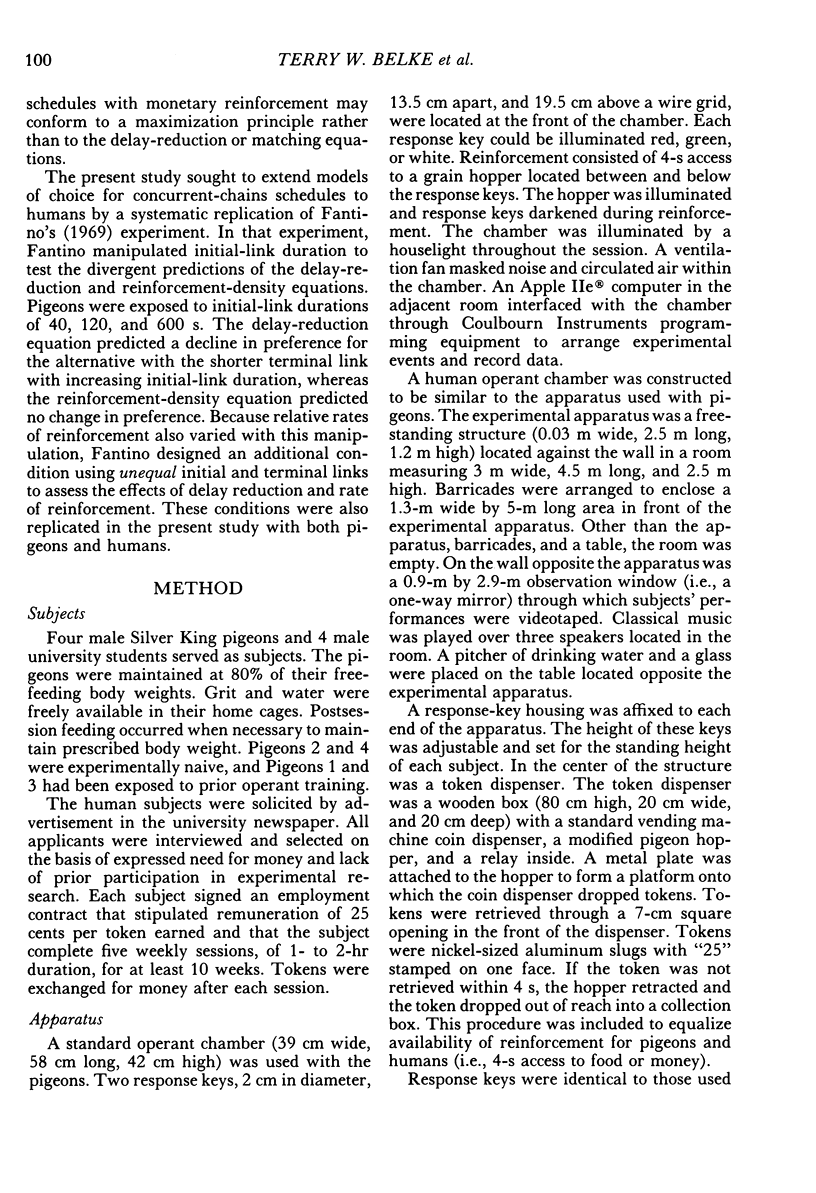
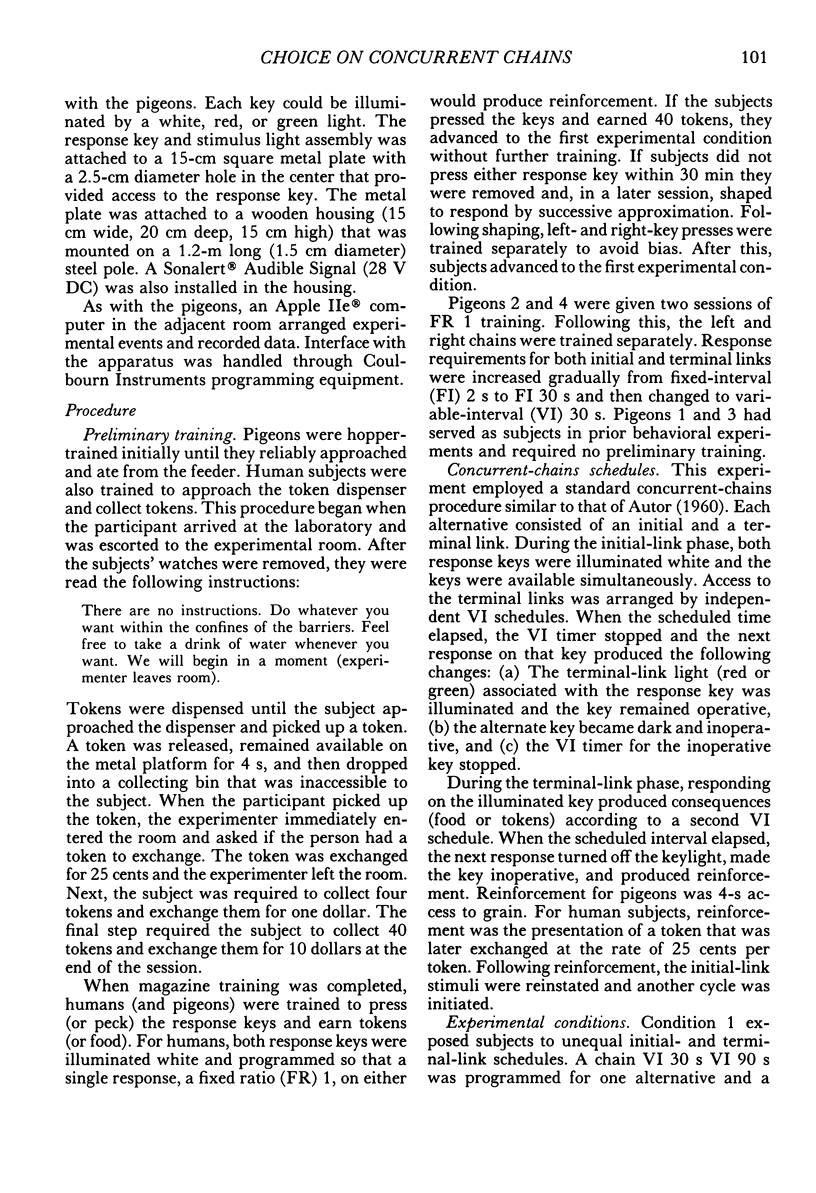
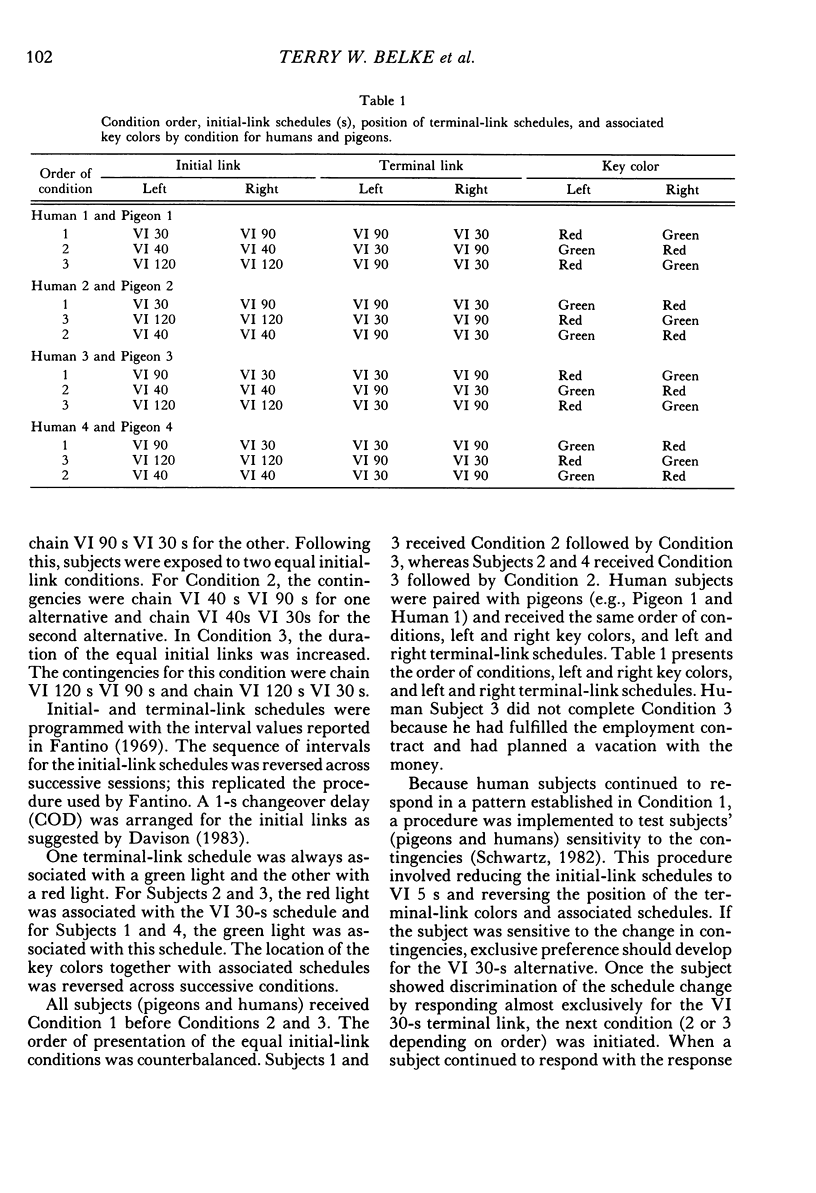
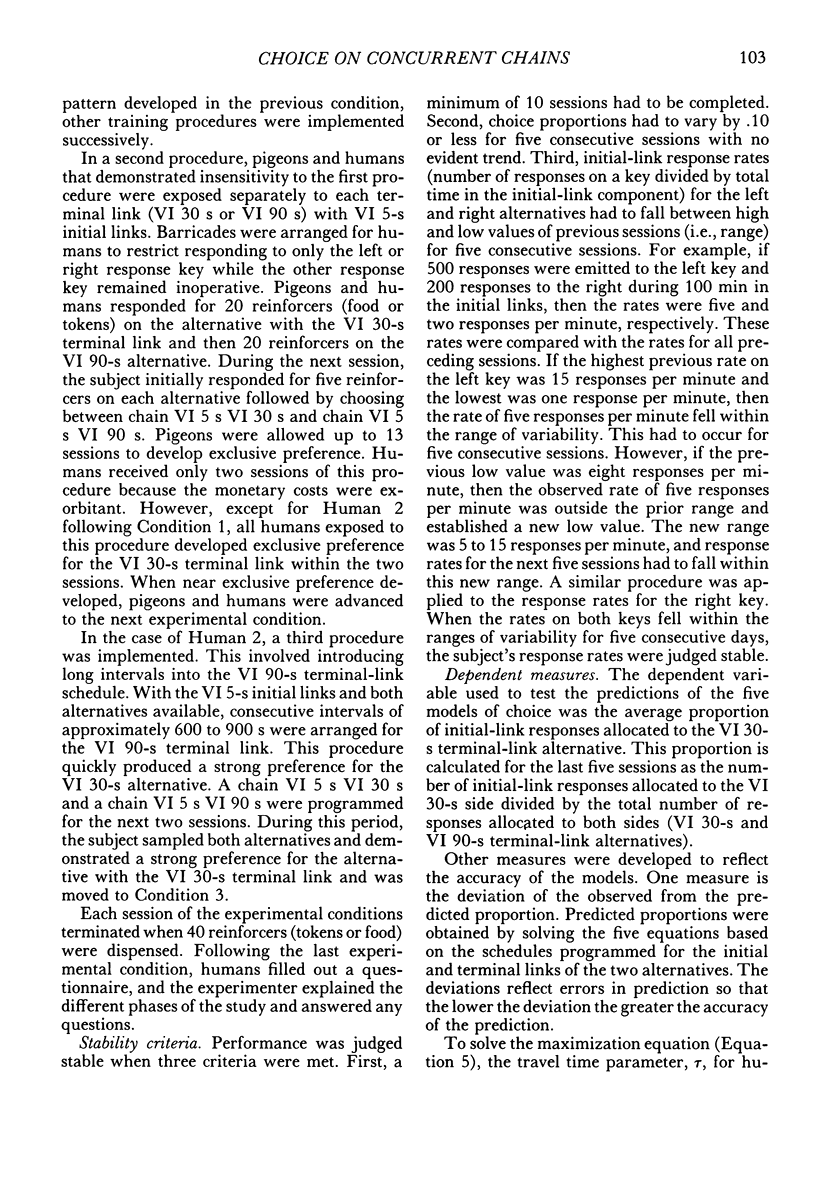
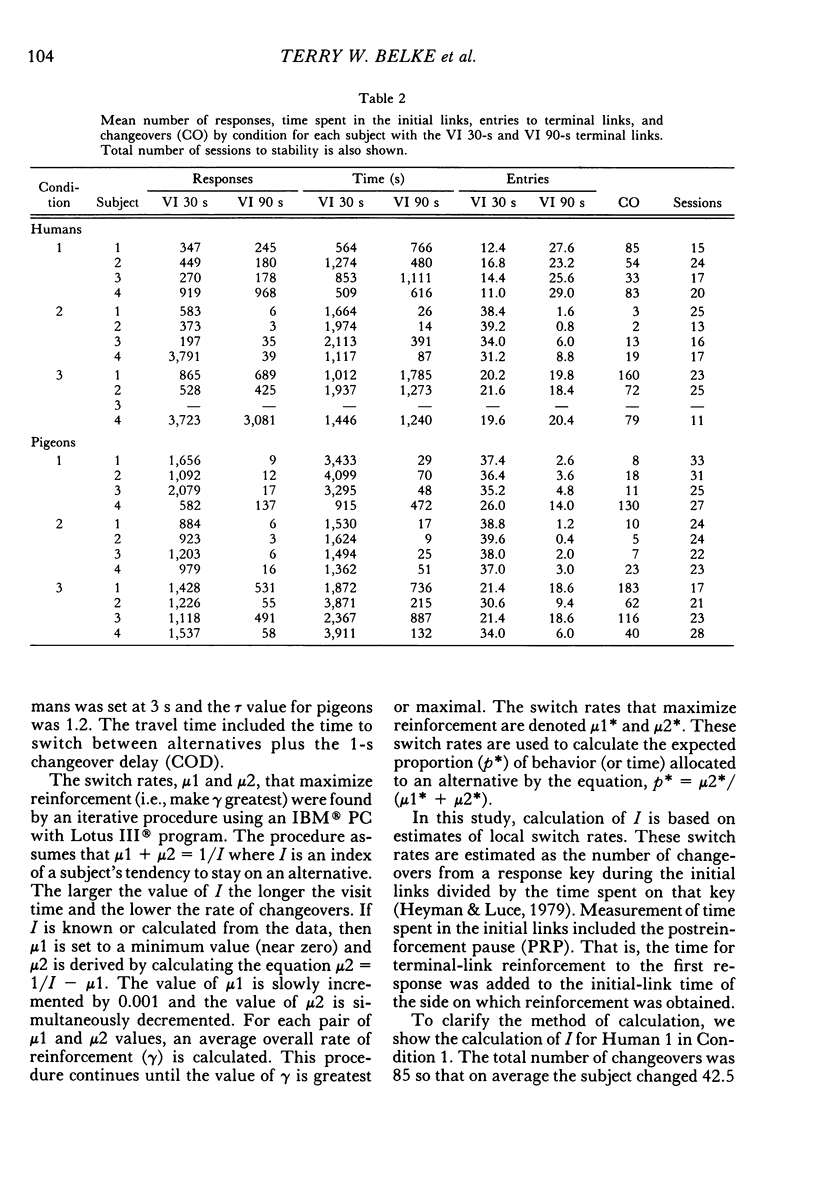
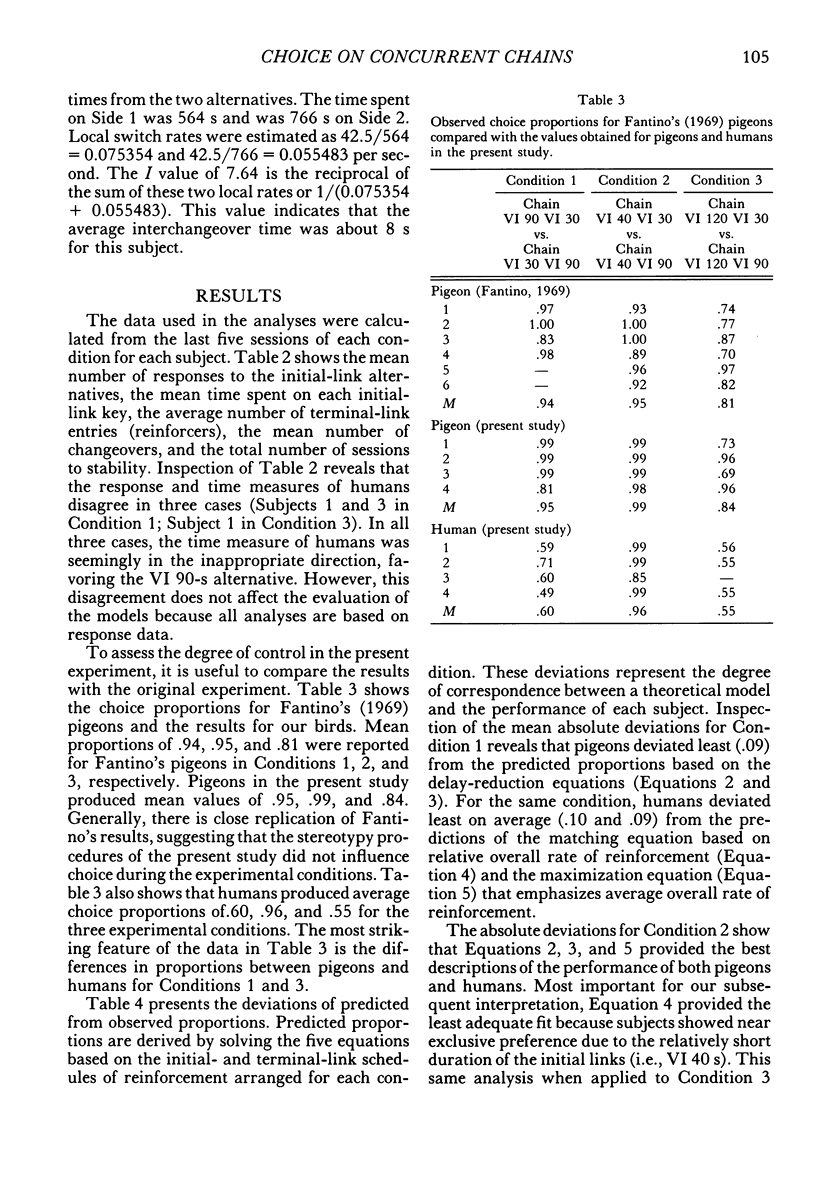
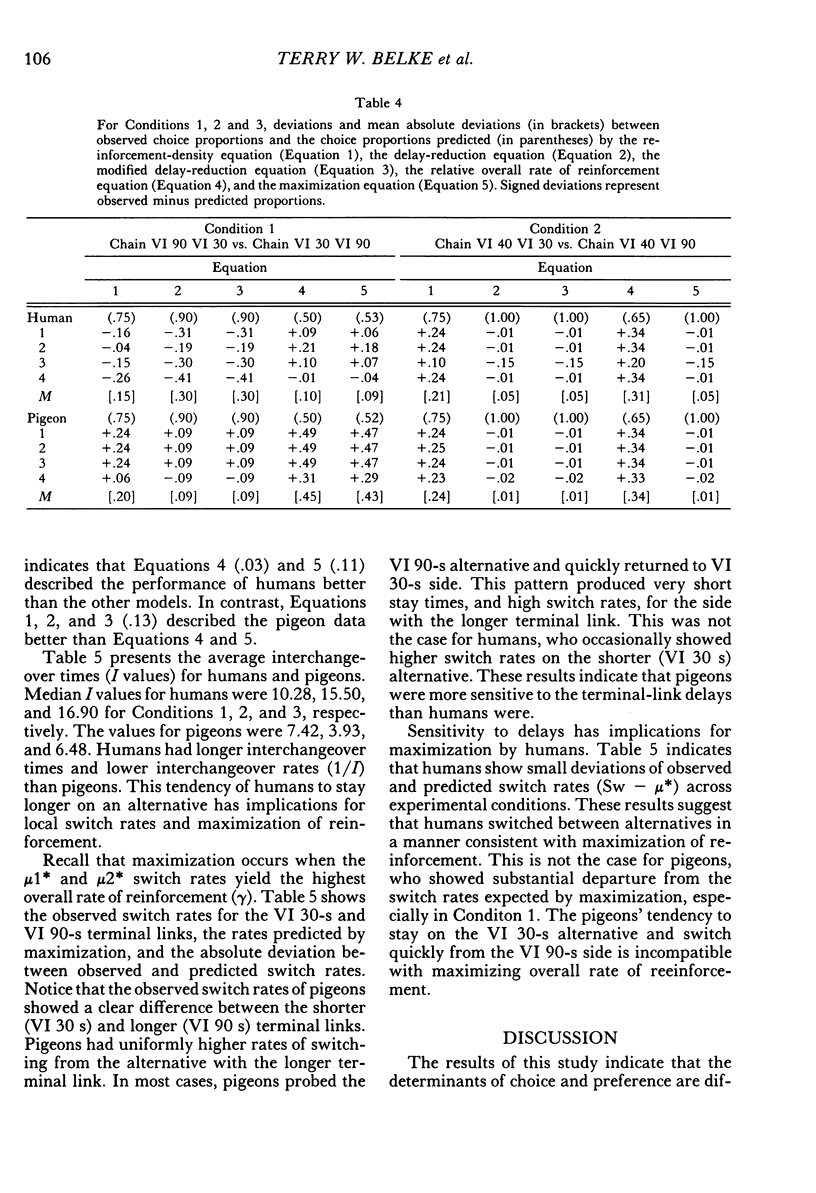
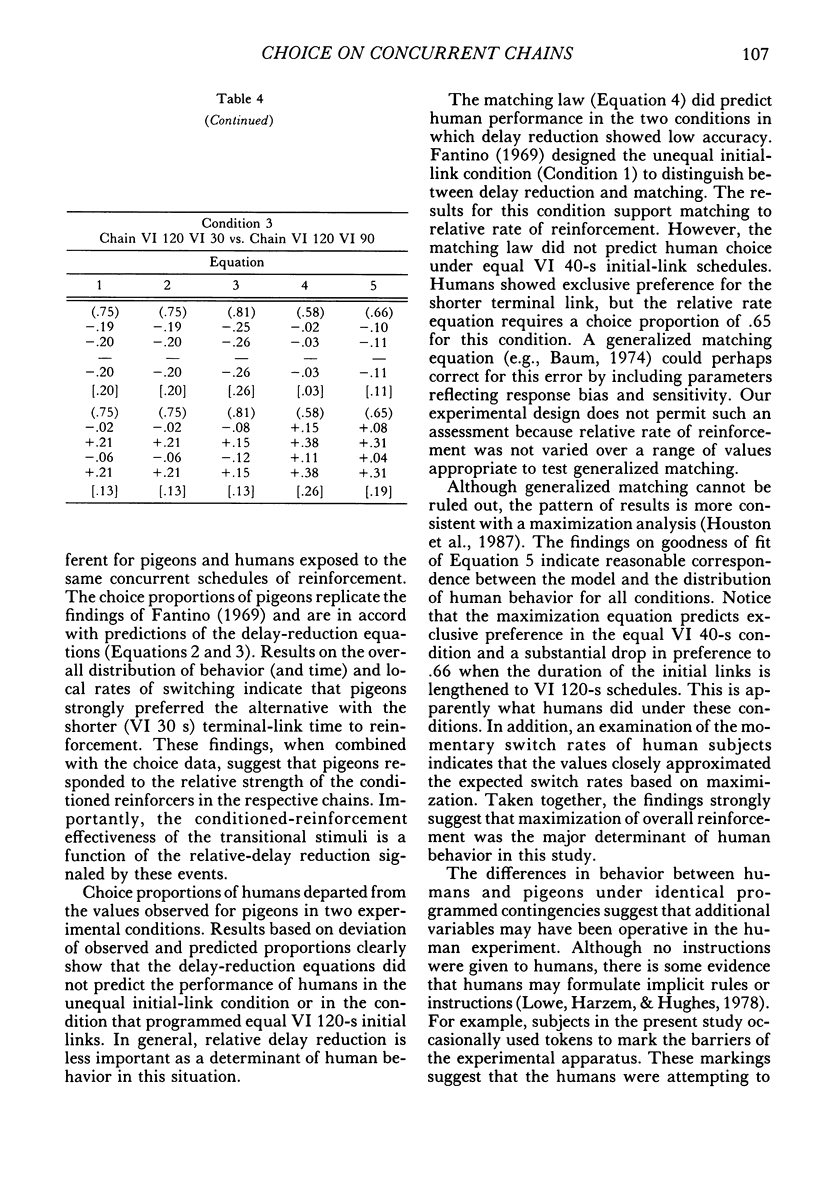
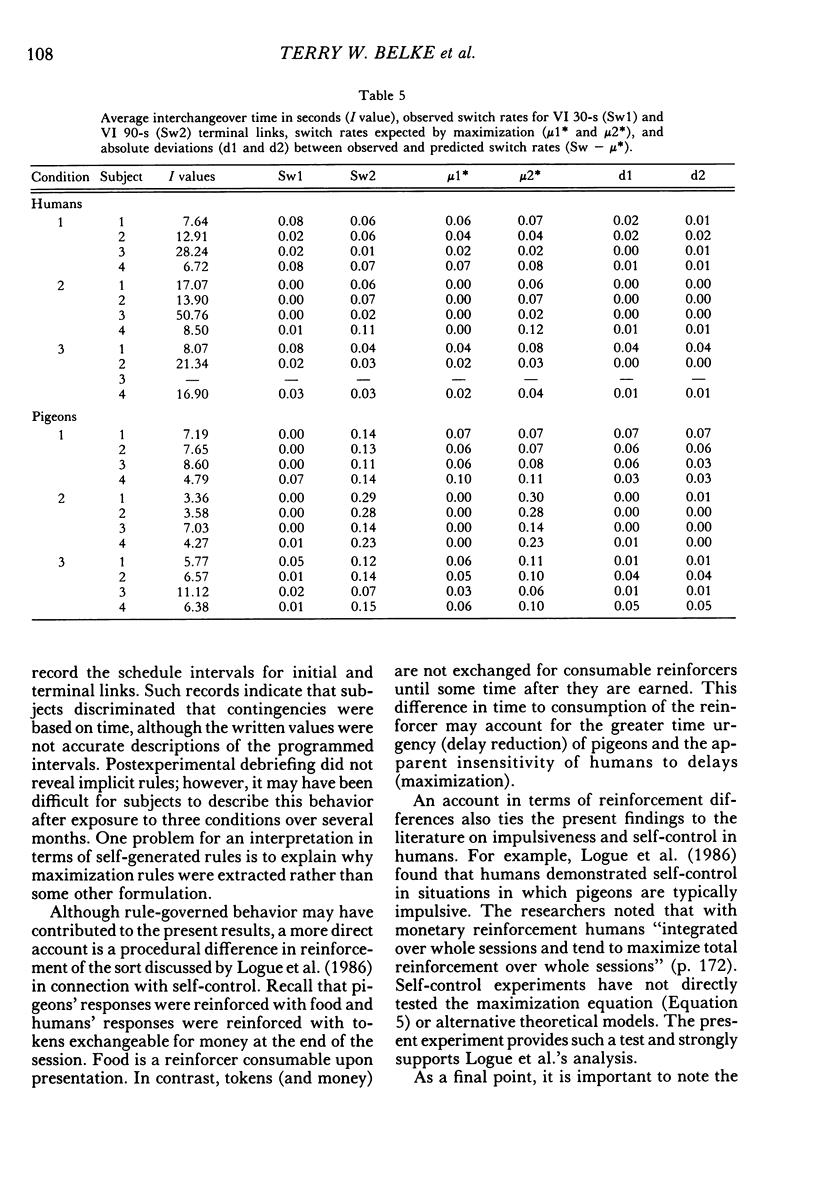
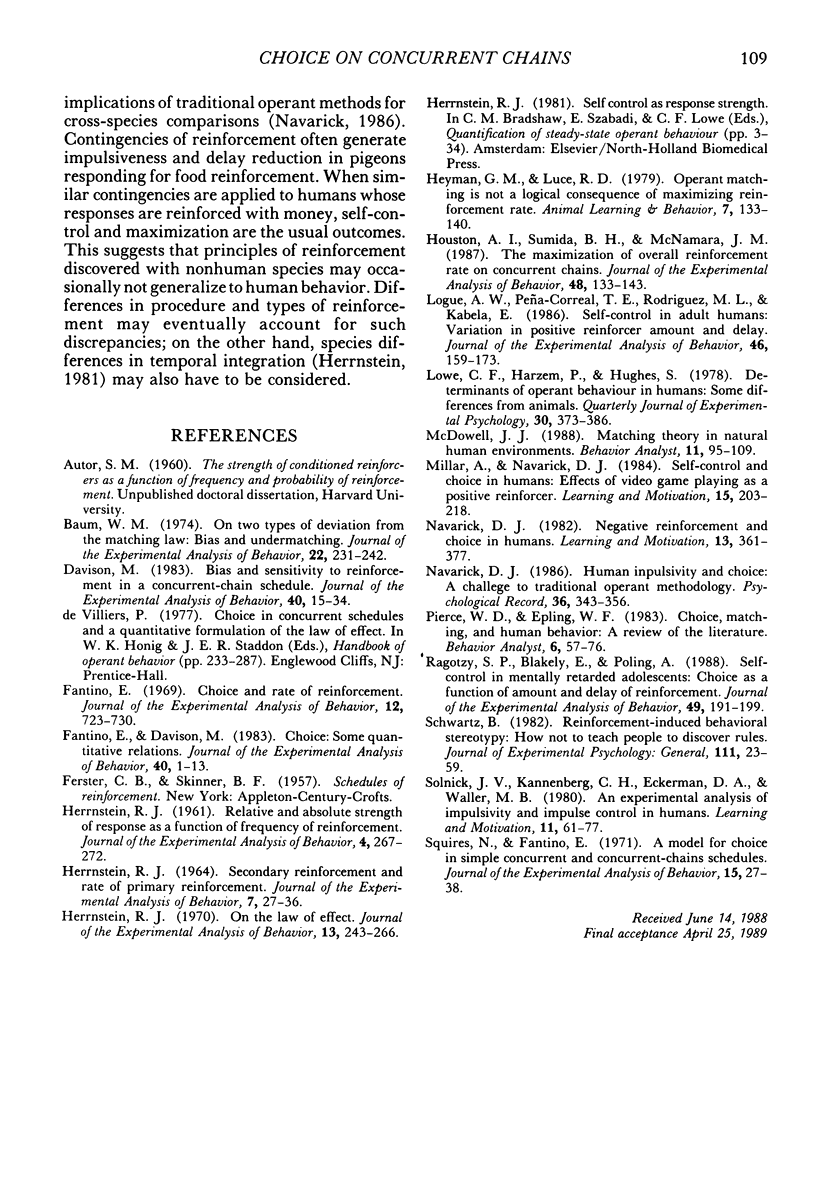
Selected References
These references are in PubMed. This may not be the complete list of references from this article.
- Baum W. M. On two types of deviation from the matching law: bias and undermatching. J Exp Anal Behav. 1974 Jul;22(1):231–242. doi: 10.1901/jeab.1974.22-231. [DOI] [PMC free article] [PubMed] [Google Scholar]
- Davison M. Bias and sensitivity to reinforcement in a concurrent-chain schedule. J Exp Anal Behav. 1983 Jul;40(1):15–34. doi: 10.1901/jeab.1983.40-15. [DOI] [PMC free article] [PubMed] [Google Scholar]
- Fantino E. Choice and rate of reinforcement. J Exp Anal Behav. 1969 Sep;12(5):723–730. doi: 10.1901/jeab.1969.12-723. [DOI] [PMC free article] [PubMed] [Google Scholar]
- Fantino E., Davison M. Choice: Some quantitative relations. J Exp Anal Behav. 1983 Jul;40(1):1–13. doi: 10.1901/jeab.1983.40-1. [DOI] [PMC free article] [PubMed] [Google Scholar]
- HERRNSTEIN R. J. Relative and absolute strength of response as a function of frequency of reinforcement. J Exp Anal Behav. 1961 Jul;4:267–272. doi: 10.1901/jeab.1961.4-267. [DOI] [PMC free article] [PubMed] [Google Scholar]
- HERRNSTEIN R. J. SECONDARY REINFORCEMENT AND RATE OF PRIMARY REINFORCEMENT. J Exp Anal Behav. 1964 Jan;7:27–36. doi: 10.1901/jeab.1964.7-27. [DOI] [PMC free article] [PubMed] [Google Scholar]
- Herrnstein R. J. On the law of effect. J Exp Anal Behav. 1970 Mar;13(2):243–266. doi: 10.1901/jeab.1970.13-243. [DOI] [PMC free article] [PubMed] [Google Scholar]
- Houston A. I., Sumida B. H., McNamara J. M. The maximization of overall reinforcement rate on concurrent chains. J Exp Anal Behav. 1987 Jul;48(1):133–143. doi: 10.1901/jeab.1987.48-133. [DOI] [PMC free article] [PubMed] [Google Scholar]
- Logue A. W., Peña-Correal T. E., Rodriguez M. L., Kabela E. Self-control in adult humans: variation in positive reinforcer amount and delay. J Exp Anal Behav. 1986 Sep;46(2):159–173. doi: 10.1901/jeab.1986.46-159. [DOI] [PMC free article] [PubMed] [Google Scholar]
- Lowe C. F., Harzem P., Hughes S. Determinats of operant behavior in humans: some differences from animals. Q J Exp Psychol. 1978 May;30(2):373–386. doi: 10.1080/14640747808400684. [DOI] [PubMed] [Google Scholar]
- Ragotzy S. P., Blakely E., Poling A. Self-control in mentally retarded adolescents: choice as a function of amount and delay of reinforcement. J Exp Anal Behav. 1988 Mar;49(2):191–199. doi: 10.1901/jeab.1988.49-191. [DOI] [PMC free article] [PubMed] [Google Scholar]
- Squires N., Fantino E. A model for choice in simple concurrent and concurrent-chains schedules. J Exp Anal Behav. 1971 Jan;15(1):27–38. doi: 10.1901/jeab.1971.15-27. [DOI] [PMC free article] [PubMed] [Google Scholar]


